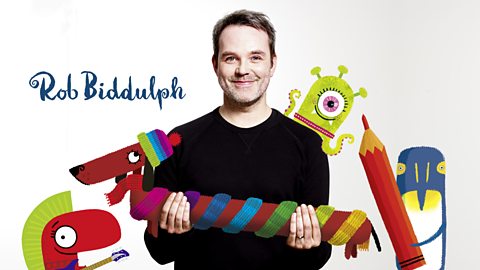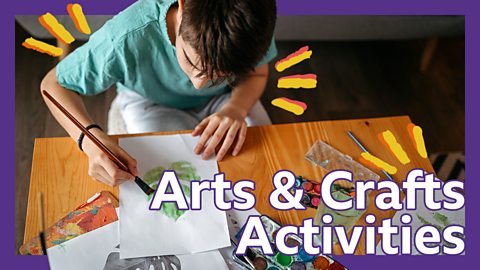A soap bubble is simply a very thin sheet of soapy water, called a soap film, surrounding a volume of air.
A force called surface tension pulls the soap film tight, so that it always has the minimum surface area possible. That's why a free-floating bubble always forms a sphere.
This experiment, brought to you in partnership with the Science Museum Group, is a fun and easy way to help your child understand the science behind shapes and their properties.
As this activity involves lots of water, you should do it in a place you don't mind getting wet and that you can clean up easily afterwards. Doing it outside is doable but even a small amount of wind might affect the bubbles that you make!
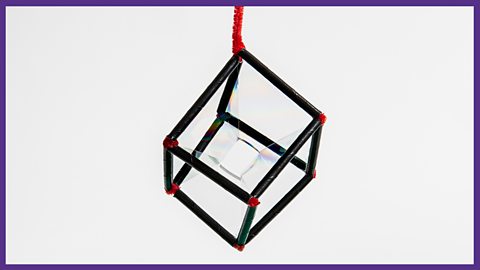
Instructions for you and your child to follow…

You will need
- Washing up liquid
- Warm water
- Scissors
- A protractor (you could print our template here)
- Bucket or a large bowl
- Sugar
- Clear plate or a clear lid
- Five straws (with four straws cut into three even pieces)
- Nine pipe cleaners

Let's get started
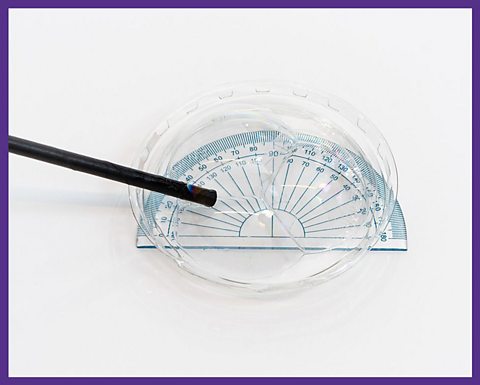
Step 1
Add 3/4 of a mug of sugar and a whole mug of washing-up liquid to 3/4 of a bucket of warm water and stir the mixture slowly for a minute or two.
Step 2
Slide the protractor underneath the clear lid or plate. Lightly coat the surface of the lid with bubble mix, dip the straw into it and slowly blow bubbles.
Step 3
Move the lid, so you can measure the angles of the bubbles on the protractor.
Have a look at the bubbles. "Are all of the angles the same?" "Can you blow a bubble inside another bubble?"


Did you know… whenever two or more bubbles meet, the angle between them will always be exactly 120 degrees?

Now to make a cube bubble
Step 4
To make a cubic frame, fold a pipe cleaner to give it three loops. Put one piece of straw on each loop.
This becomes one corner of the cube.
Step 5
Make seven more pipe cleaner corner pieces, and attach more straw pieces to complete the cube.
Step 6
Dip the frame fully into the solution. Gently pull it out and blow a bubble in the middle with a straw.


Maths in your world
The hexagon pattern seen in honeycomb works in the same way as how bubbles connect – always at 120 degrees. The honeycomb connects using the least amount of wax.


The Science Museum Group is a group of museums in the UK who share objects, stories and hands-on activities to engage more people in science, technology, engineering and maths.
Images © Science Museum Group

More from BBC Bitesize Parents' Toolkit…
Parents' Toolkit
Fun activities, real-life stories, wellbeing support and loads of helpful advice - we're here for you and your child.

Fun activities for smaller children
Four to five-year-olds can have fun and learn new skills with these videos. From Tiny Happy People.
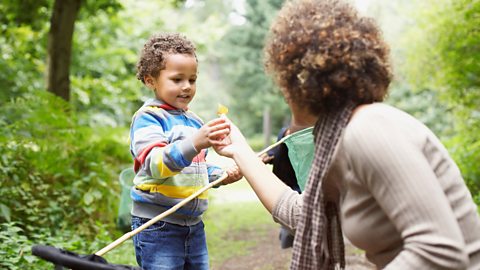
Seven skills a teenager can learn in one month
If your teen wants to shake up their free time, here are seven skills they can try.

Rob Biddulph's five tips to help you confidently draw with your kids
Rob Biddulph, author and official illustrator for World Book Day, has some great tips and tricks to share to help you draw with your kids.
